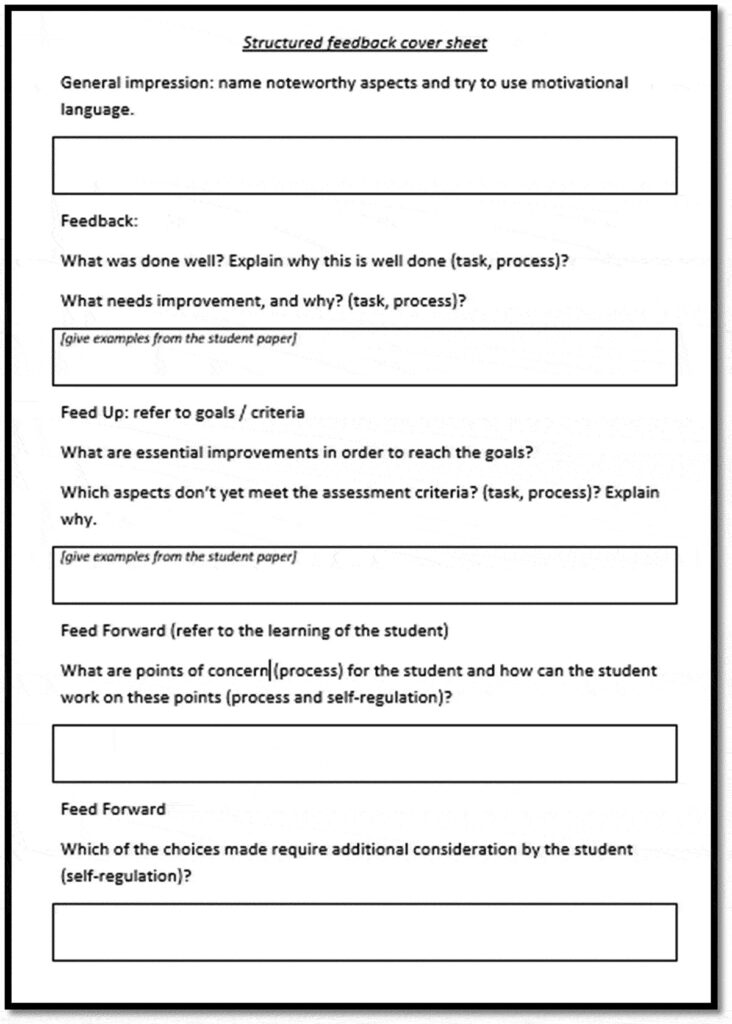Using a ‘cover sheet’ is a simple and effective tool to enhance feedback on student work, this study claims.
Giving teachers a form to fill out instead of just having them make notes in the margines of the work, makes sure feedback is not limited to comments on what was handed in (feed-back), but includes an appraisal of how it matches up to the final criteria or end-goals (feed-up) and practical advice on how to proceed (feed-forward).
Sadly, the study didn’t test using only this form against the more traditional way of giving feedback. The experimental condition was adding this form to notes on the work, while the control was just those notes alone.
So yeah, extra feedback is better. No shit, Sherlock.
Nonetheless, a form like this seems like a good idea to use as a form of checklist. Because I do think i often forget one or two out of the three kinds of feedback.

(Via ScienceGuide)